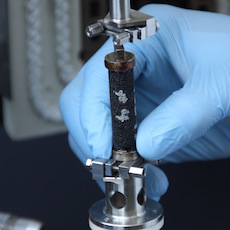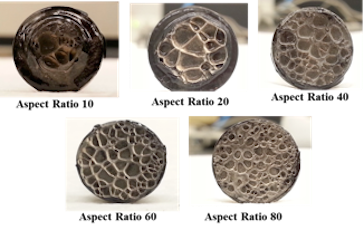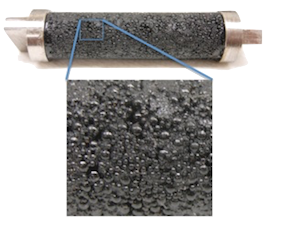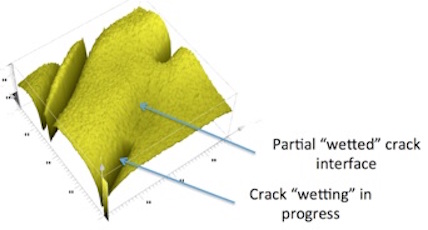A bit more about my research...
Whether it’s commuting to work, traveling to school, shopping for groceries, or going
on a vacation; transportation is ingrained in our day- to-day lives. Yet very rarely do
we think about the roads that make it possible for private, public and commercial vehicles
to get from one place to another. The transportation infrastructure of the United States
is worth trillions dollars and about one-third the value of all fixed assets; this
includes about 2.5 million centerline miles of highways paved using asphalt mixtures.
The social, economic and environmental impact of our roadways cannot be overemphasized.
Just how much is 2.5 million centerline miles of asphalt? Think of it this way:
it would take about 10 seconds at the speed of light to cover this distance,
or roughly five trips to the moon and back.
It is an extraordinarily difficult task to develop and deploy engineering solutions
and practices that can be used to maintain and expand our roadways in a sustainable and
eco-friendly manner. In order to accomplish this, one needs to solve the jigsaw puzzle
that links the chemical makeup of the ingredients (at a molecular length scale) to the
engineering properties and performance of asphalt mixtures and pavements. My research
is to better understand some pieces of this puzzle and use this knowledge to create
tools that help the industry to build and maintain eco-friendly, cost effective,
durable and safe roads. Scrolls down for some more details on some of
these puzzle pieces…
IMPACT Lab
The IMPACT (Infrastructure Materials Performance And CharacTerization) lab. at UT Austin
was set up in 2008 with core testing facilities to help solve this puzzle.

Damage
Fatigue damage in asphalt mixtures is due to the repeated action of loads
(from vehicles and/or environmental conditions). Processes that influence the rate of
crack growth in asphalt concrete are significantly different from the classical mechanisms
that are used to model crack growth in elastic materials such as metals or concrete.
Examples of work in this area:
- Simple test methods to characterize damage in asphalt binders and composites.
- Investigating crack nucleation in asphalt binders.
- Energy methods to characterize fatigue cracking in binders and asphalt composites.
- Nonlinear viscoelastic response under dynamic and static loading.
- Influence of confinement on stress state, crack nucleation and crack growth in asphalt
binders within a composite.
- Damage evolution under multi-axial stress state in mortars.

Asphalt Genome
The Asphalt Genome project was started in approximately 2010 here at UT Austin.
In the context of a full asphalt mixture, asphalt binder can be treated as a homogenous
material. At smaller and sub micron length scales the asphalt binder is a complex
ensemble of several distinctly different types of constituent molecules that co-exist
in a stable configuration. Groups of similar molecules can be treated as different
phases within the asphalt binder. Investigating the chemical makeup of asphalt binder
or the asphalt genome can help answer some questions such as,
- How different chemical fractions contribute to the microstructure, stiffness, strength
and healing characteristics of asphalt binders?
- How does fatigue damage (plastic or cracking) accumulate?
- Some of the tools useful in this research are the Atomic Force Microscope (AFM),
micro beam fatigue apparatus (indigenously developed), and computational tools
such as molecular dynamics simulation.

Eco-friendly practices
There is an increased impetus to advance the characterization and design tools
pertaining to the preservation of existing pavements and use of technologies such as
warm mix asphalt, cold mixes, and recycled asphalt concrete. Large scale implementation
of these technologies is critical for sustainable use of our natural resources.
Examples of work in this area:
- Mechanics of interactions between particulate warm mix additives and asphalt binder and
influence on durability
- Use of thermal treatment to accelerate healing and reverse crack growth in asphalt
mixtures





